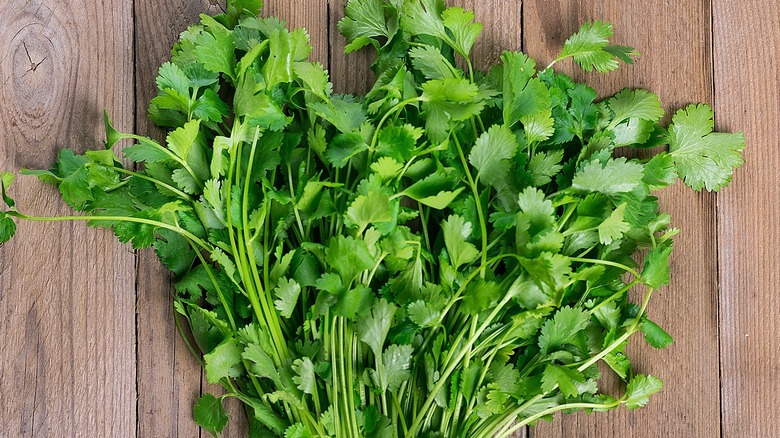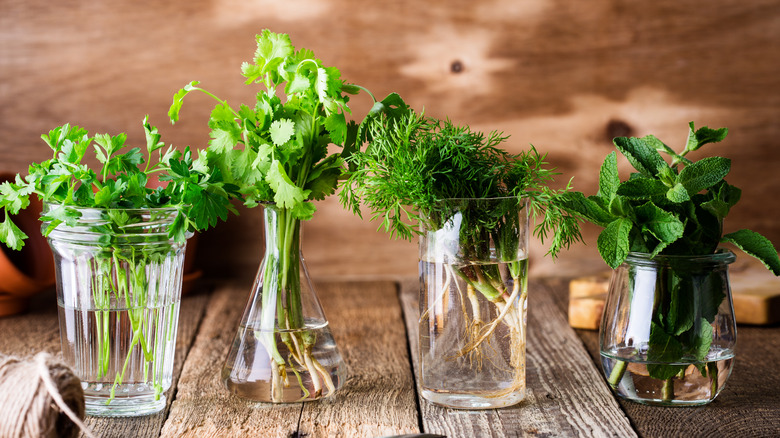Here's How To Keep Cilantro Fresh
If you enjoy the clean, fresh taste of cilantro, the options are practically unlimited. It adds a zing of aromatic flavor to anything from simple rice and guacamole to an elaborate curry, so it's no surprise that cilantro fans can't resist bringing some home when they see the herb in their grocery store or farmer's market.
Purdue Extension's Food Link offers a few tips for choosing quality bunches of cilantro. They recommend looking for bright green leaves, ideally without spots or a wilted appearance. Sometimes cilantro may have dirt or mud on it, so Spiceography recommends washing it when you get home, both for safety and so it keeps better.
If you love herbs, you may be tempted to stock up, but there's always the issue that fresh herbs, well, don't stay fresh for long. You've probably experienced this firsthand if you ever bought avocados and cilantro to make guacamole. Don't you hate it when your avocados are perfectly ripe but then you reach for the cilantro only to find it is wilted? Of course, dried herbs are also an option, but as The Kitchn notes, cilantro isn't always best dried. Still, you may not need to deny yourself fresh cilantro if you learn a few storage techniques that help keep it green and robust for longer so it's still perky when you're ready to make that guacamole.
Treat it like cut flowers
Think of fresh herbs like flowers. If someone gives you a nice bunch of blooms, you wouldn't just keep the bouquet bound up with a rubber band and a plastic bag and throw it in your refrigerator, right? In the case of cilantro, it helps to remember that the cut herb lasts longest in a cool temperature so your refrigerator is the best place (per Oregon State University Extension). Wash it and make sure to remove the rubber band, since per Food Network, the leaves stay fresher longer when they aren't tightly bound. From there, you have a few storage options that can help your cilantro stay fresh for up to a few weeks.
One option is to loosely arrange the cilantro in a glass jar with water, like flowers in a vase, making sure that no leaves end up submerged. For an extra boost, Oregon State notes you could even add a little lemon juice or a vitamin C tablet. Change the water every two to three days and cover it with a loose plastic bag for protection (via Utah State).
If you prefer a flat pack option, loosely layer the cilantro between paper towels and store it in a bag. Oregon State University suggests using a mesh produce bag, since a plastic bag may trap bacteria and cause the cilantro to decay faster. Now that you know how to keep it fresh, you'll be able to pair cilantro with all sorts of classic ingredients.

